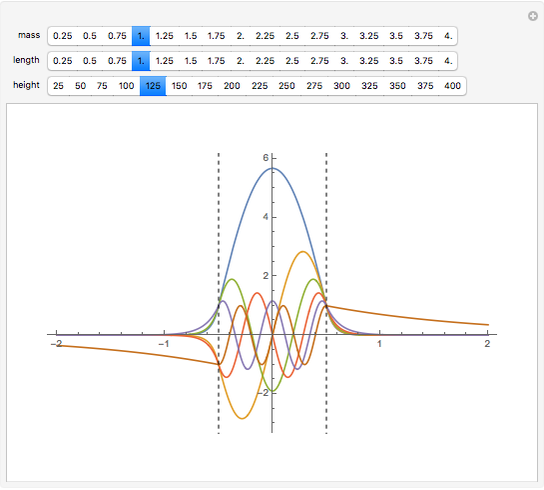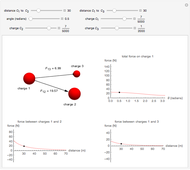

We note that as the potential energy well gets shallower and/or narrower, ζ 0 0.ĢSince E < 0, we choose to write E = −| E| to avoid any ambiguity in sign.ģThis is due to the fact that for even potential energy functions, the Hamiltonian commutes with the parity operator. You can change a and |V 0| by dragging the sliders to a particular value to see how the left-hand side of Eq. You may also select the Show the transcendental equation as a function of energy instead link to see the equations as a function of energy. (11.7) is shown in black and the left-hand side is shown in red. We can solve this equation numerically or graphically, and we choose graphically in the animation. (11.7) only has solutions for particular values of ζ. This equation is a transcendental equation for ζ which itself is related via Eq. We now consider the following substitutions in terms of dimensionless variables: This is actually a constraint on the allowed energies, as both k and κ involve the energy. We now divide the resulting two equations to give a condition for the existence of even solutions: κ/ k = tan( ka). Ψ' I(− a) = ψ' II(− a) → Aκ exp(−κ a) = Cksin(− ka).įrom the symmetry in the problem, we need not consider the boundary at x = a as it yields the exact same condition on energy eigenfunctions. Matching proceeds much like the scattering cases we considered in Chapter 8. 3 We begin by considering the even (parity) solutions and therefore the ψ II(x) = Ccos( kx) solution in Region II. Since the potential energy function is symmetric about the origin, there are even and odd parity solutions to the bound-state problem. Matching the energy eigenfunctions across these boundaries means that the energy eigenfunctions and the first derivatives of the energy eigenfunctions must match at each boundary so that we have a continuous and smooth wave function (no jumps or kinks). Next, we must match the solutions across the boundaries at x = − a and x = a. The above equation has the solutions ψ II( x) = Bsin( kx) + Ccos( kx) which are valid solutions for Region II. In this region we can write the time-independent Schrödinger as Stack Exchange network consists of 180 Q&A communities including Stack Overflow, the largest, most trusted online community for developers to learn, share their knowledge, and build their careers. V( x) = −| V 0| − a a and x a), for bound-state solutions, E V 0 or | V 0| > | E|. The finite square well problem is defined by a potential energy function that is zero everywhere except 1

Please wait for the animation to completely load. Restart | Show the transcendental equation as a function of energy instead | Show the energy eigenfunction and well instead This method has another benefit, and that's it clarifies the nature of the eigenvalues and the reason they appear.Check, then drag a slider to see the odd states' TE. I know, that in a standard finite potential well, which is symmetric we have two possible wavefunctions - one is odd $\psi_$$ And this is my 1st finite potential well homework problem so take it easy on me. Here are the first and second excited states: First excited state, n 2: E 3.4 eV.
BOUND STATES ENERGY LEVELS FINITE QUANTUM CALCULATOR FREE
Notice that this energy is negative because the electron is in a bound state you’d have to add energy to the electron to free it from the hydrogen atom. Ok now that I have an image I can tell you what I already know and what is still unclear to me. The ground state, where n 1, works out to be about E 13.6 eV. In the image $W_p$ marks the potential energy but never mind I'll use $E_p$ notation. What is the probability,ġst I draw the image of the well, so we can talk better - otherwise this makes no sense as it looks like a complex homework. Normalized wavefunction of the ground state. What is the energy of the ground state? Write the

The problem statement, all variables and given/known dataĮlectron of is in a 1-D potential well of depth $20eV$ width $d=0.2 nm$ in his ground


 0 kommentar(er)
0 kommentar(er)
